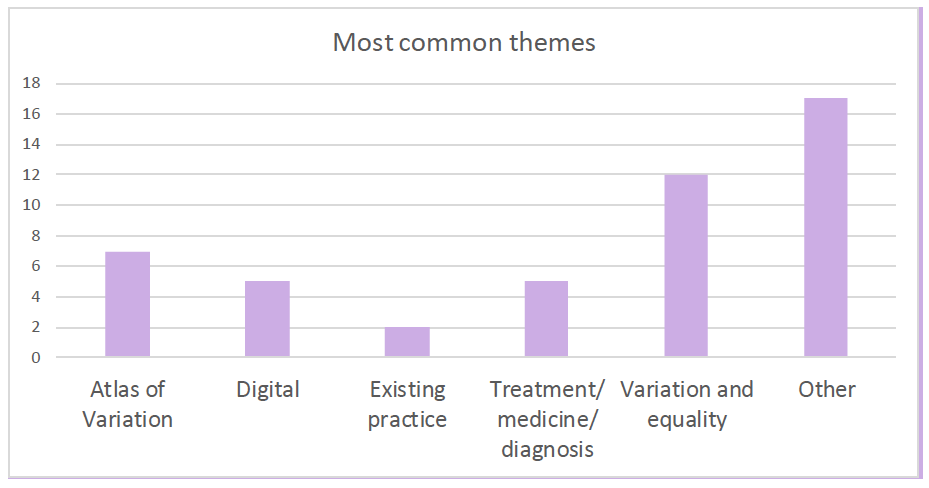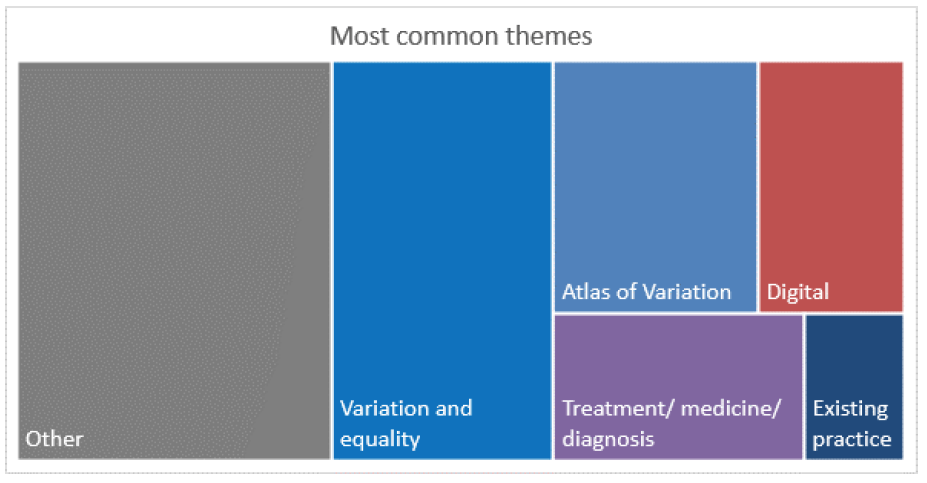Respiratory care action plan draft: consultation report
The analysis of the consultation responses for the draft Respiratory Care Action Plan for Scotland, which sets out our vision for driving improvement in the diagnosis, treatment and care for those living with respiratory conditions.
Question 9: Equal access
Commitment 11 – We will work with the Scottish Atlas of Variation Group to explore developing an Atlas on respiratory conditions
| Option | Total | Percent |
|---|---|---|
| Yes | 100 | 84.03% |
| No | 3 | 2.52% |
| Don't know | 9 | 7.56% |
| Not Answered | 7 | 5.88% |
| Total | 119 | 100% |
A total of 112 people responded to this question, with 40 responses being expanded to include comments. Of those, a majority (100) agreed with the commitment on equal access, with a minority (3) disagreeing or not knowing (9). 7 people did not answer the question. To further breakdown the figures of those who responded:
- NHS (boards and organisations) 9
- Third sector organisations 12
- Private sector companies 7
- General public individuals 84
Overall, the general themes that came out of the responses to this question were: inequalities/variation in access; technology and data; diagnostics and treatment, and; funding. As seen in the number of 'yes' responses there was wide agreement about the importance of equal access, and several responses noted that this is an area that requires improvement.
Breakdown of the most common themes:
Inequalities
As shown in the breakdown of the most common themes and issues, a majority of responses to this question cited various concerns over existing inequalities. A number of responses called for improved access to clinically appropriate health care regardless of where they live, stating the current system remains a "postcode lottery" which disproportionately impacts on the most rural communities in Scotland. The issue of social deprivation was also mentioned in respect of health inequalities.
Technology and data
It was suggested by some respondents that improved online resources could be used as a means of helping reach those living in remote or rural areas; online shared learning and resources for both clinicians and people with respiratory conditions would help bridge the existing gap.
With regards to the Atlas of Variation, respondents noted the data opportunities to target resources where needed. For example, it was suggested that the Atlas be expanded to include measures for respiratory conditions such as poorly controlled and severe asthma, as well as including the incidence and prevalence of these conditions to assist in targeting the most vulnerable groups. Expansion of data to include homelessness was mentioned to ensure the hardest-to-reach individuals are not excluded from equal access, as well as the possibility of a commitment to equal care for minority communities such as LGBT+ and BAME groups.
Diagnostics and treatment
As elsewhere in this analysis, the issue of variation in diagnostics was raised and it was hoped by some respondents that an Atlas of Variation would allow for concentrated resources in more deprived areas, perhaps increasing the use of community settings where needed.
Funding
There was concern around funding for any resource gaps identified within an atlas.

A chart showing phrases from the Q9 responses. Variation had 12 mentions; existing practice had 2.

A chart showing phrases from the Q9 responses. Variation had 12 mentions; existing practice had 2.
Contact
Email: Clinical.Priorities@gov.scot
There is a problem
Thanks for your feedback